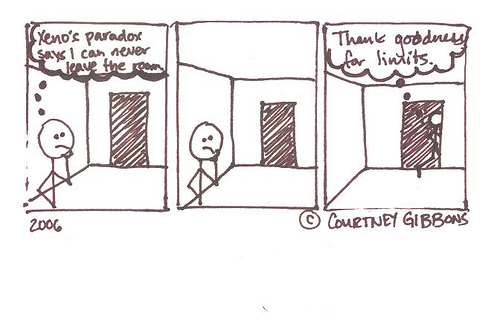1. Omniscient Point of View: knowing all things, usually the
third person.

2. Onomatopoeia: use of a word whose sound in some degree
imitates or suggests its meaning.

3. Oxymoron: a figure of speech in which two contradicting
words or phrases are combined to produce a rhetorical effect by means of a
concise paradox.

4. Pacing: rate of movement; tempo.
5. Parable: a story designed to convey some religious
principle, moral lesson, or general truth.
6. Paradox: a statement apparently self-contradictory or
absurd but really containing a possibe truth; an opinion contrary to generally
accepted ideas.

7. Parallelism: the principle in sentence structure that
states elements of equal functions should have equal form.
8. Parody: an imitation of mimicking of a composition or of
the style of a well-known artist.

9. Pathos: the ability in literature to call forth feelings
of pity, compassion, and/or sadness.
10. Pedantry: a display of learning for its own sake.

11. Personification: a figure of speech attributing human
qualities to inanimate objects or abstract ideas.

12. Plot: a plan or scheme to accomplish a purpose.

13. Poignant: eliciting sorrow or sentiment.

14. Point of View: the attitude unifying any oral or written
argumentation; in description, the physcial point from which the observer views
what he is describing.

15. Postmodernism: literature characterized by
experimentation, irony, nontradictional forms, multiple meanings, playfulness
and blurred boundary between real and imaginary.
16. Prose: the ordinary form of spoken and written language;
language that does not have a regular rhymen pattern.

17. Protagonist: the central character in a work of fiction;
opposes antagonist.

18. Pun: play on words; the humorous use of a word emphasizing
different meanings or applications.

19. Purpose: the intended result wished by an author.
20. Realism: writing about the ordinary aspects of life in a
straightforward manner to reflect life as it actually is.

21. Refrain: a phrase or verse recurring at intervals in a
poem or song; chorus.
22. Requiem: any chant, dirge, hymn, or musical service for
the dead.

23. Resolution: point in a literary work at which the chief
dramatic complication is worked out; denouement.

24. Restatement: idea repeated for emphasis.
25. Rhetoric: use of language, both writeen and verbal in
order to persuade.

No comments:
Post a Comment